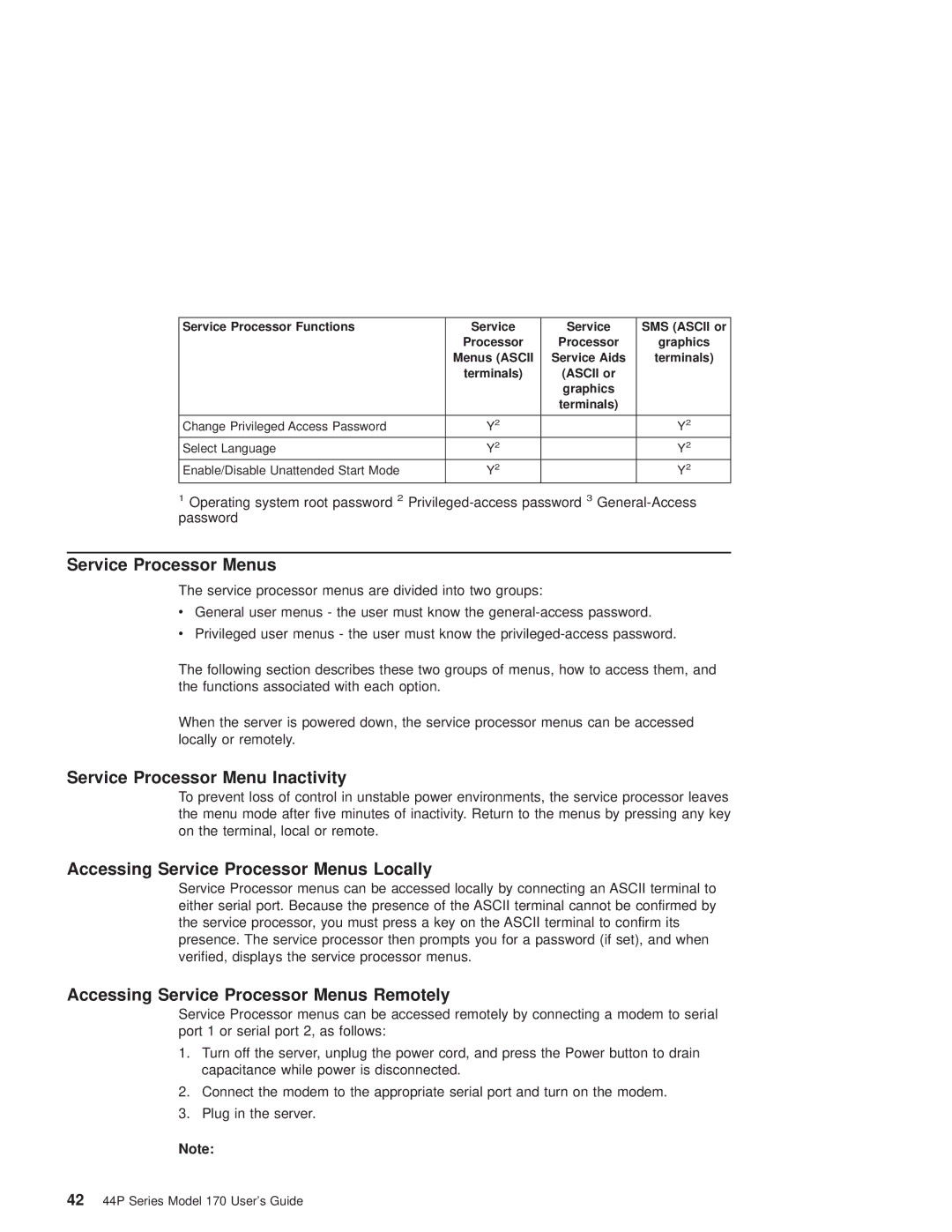Service Processor Functions | Service | Service | SMS (ASCII or |
| Processor | Processor | graphics |
| Menus (ASCII | Service Aids | terminals) |
| terminals) | (ASCII or |
|
|
| graphics |
|
|
| terminals) |
|
|
|
|
|
Change Privileged Access Password | Y2 |
| Y2 |
Select Language | Y2 |
| Y2 |
|
|
|
|
Enable/Disable Unattended Start Mode | Y2 |
| Y2 |
|
|
|
|
1Operating system root password 2
Service Processor Menus
The service processor menus are divided into two groups:
vGeneral user menus - the user must know the
vPrivileged user menus - the user must know the
The following section describes these two groups of menus, how to access them, and the functions associated with each option.
When the server is powered down, the service processor menus can be accessed locally or remotely.
Service Processor Menu Inactivity
To prevent loss of control in unstable power environments, the service processor leaves the menu mode after five minutes of inactivity. Return to the menus by pressing any key on the terminal, local or remote.
Accessing Service Processor Menus Locally
Service Processor menus can be accessed locally by connecting an ASCII terminal to either serial port. Because the presence of the ASCII terminal cannot be confirmed by the service processor, you must press a key on the ASCII terminal to confirm its presence. The service processor then prompts you for a password (if set), and when verified, displays the service processor menus.
Accessing Service Processor Menus Remotely
Service Processor menus can be accessed remotely by connecting a modem to serial port 1 or serial port 2, as follows:
1.Turn off the server, unplug the power cord, and press the Power button to drain capacitance while power is disconnected.
2.Connect the modem to the appropriate serial port and turn on the modem.
3.Plug in the server.
Note:
4244P Series Model 170 User's Guide
